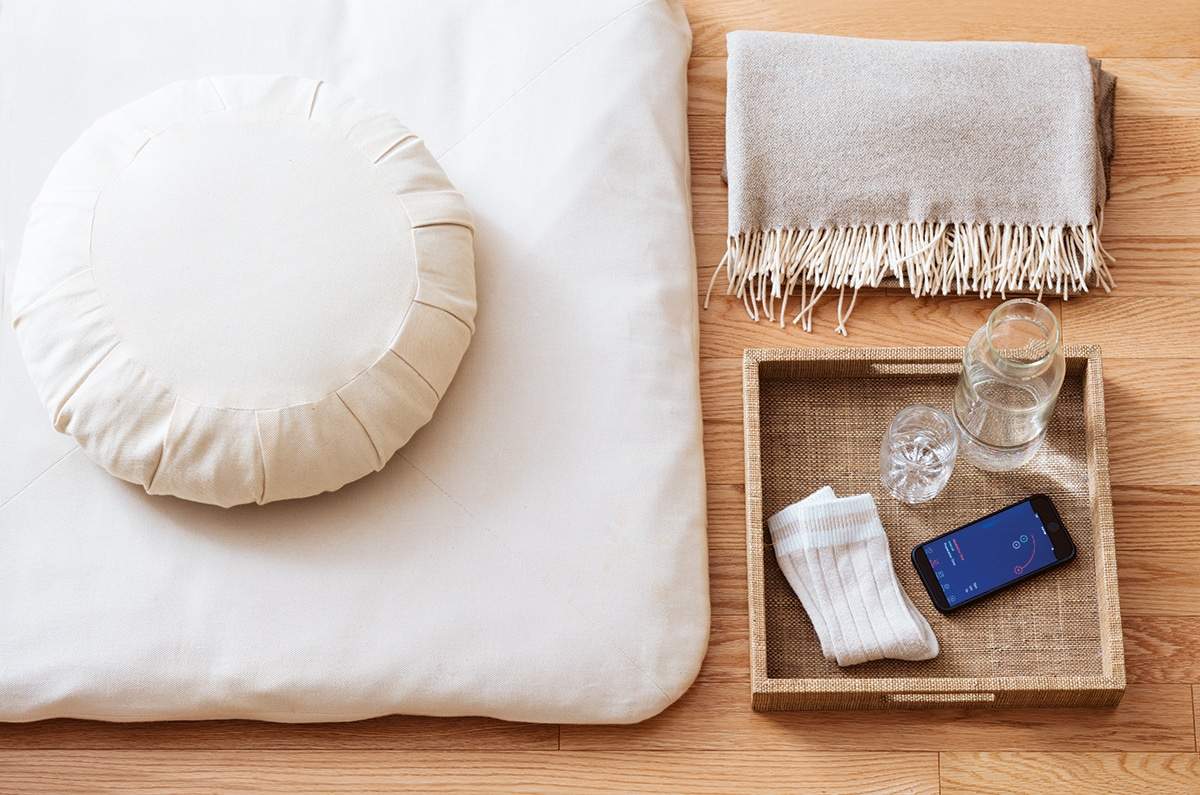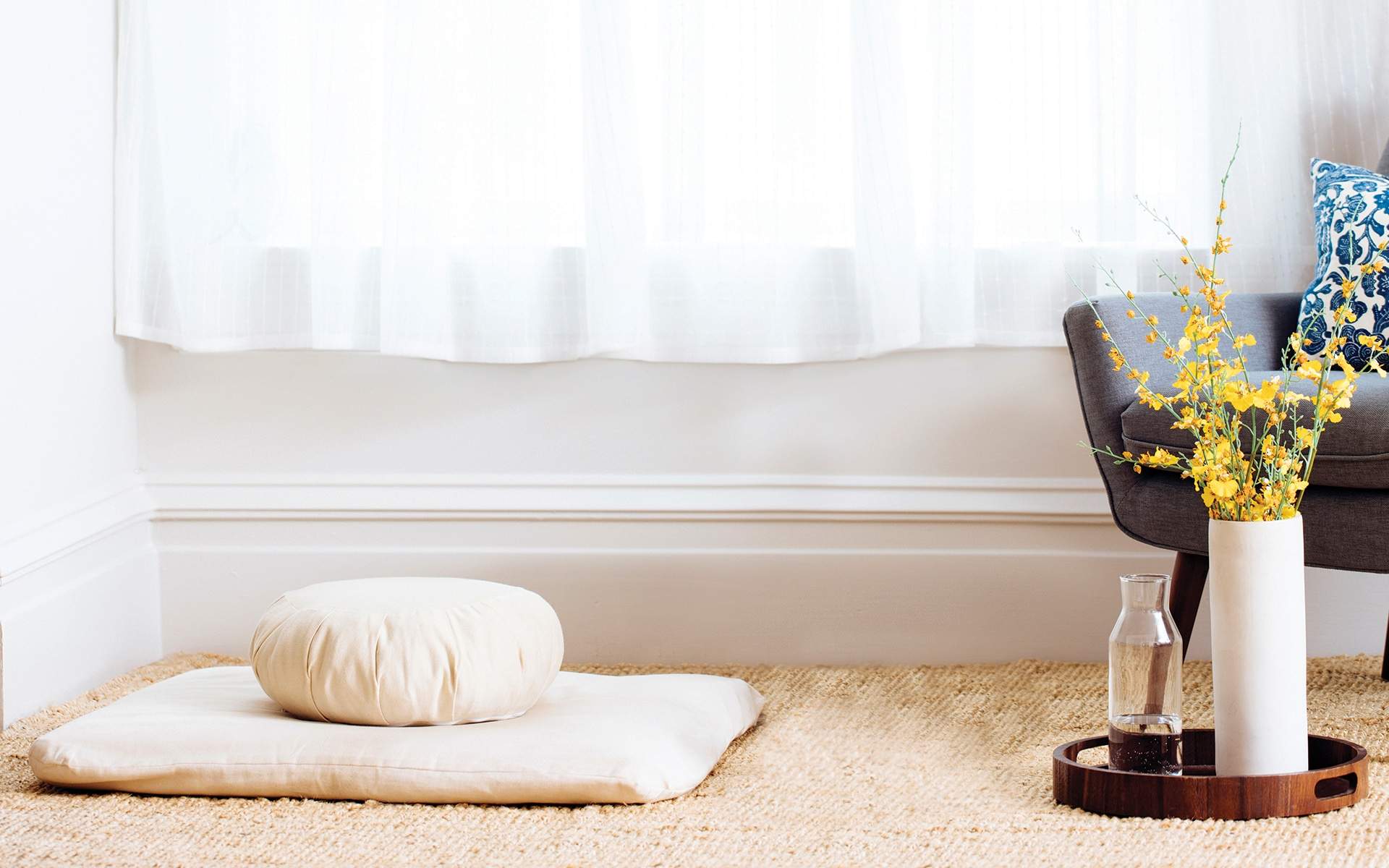Imagine lying in bed, thinking about your day: back-to-back meetings this morning, helping to take your partner’s car for repair, a proposal to finish, and plans for dinner that you’re wondering if you should just cancel. You had hoped to fit in some exercise, but that’s probably not going to happen. You can feel your mind start to whirl.
Then imagine getting up and going to your meditation cushion. You drape a wrap across your shoulders, set your timer, and…sit.
You could do this practice right in bed, at your kitchen counter, anywhere really. But there’s something very purposeful and grounding about having a special place to meditate, a designated spot where you can take time to get your body and mind in sync. It might be a whole room dedicated to meditation and other mindful pursuits. It could be a corner in a multipurpose room. Even just a few elements that inspire you can help make any space right for your practice.
Our own internal poll reveals a few common themes when it comes to the ideal meditation space:
• There’s a comfortable yet supportive place to sit.
• It’s neither too hot nor too cold.
• There’s a way to keep track of time.
• There is support for achy or stiff body parts.
• It’s well laid out—in other words, you feel good being in this space and ready to meditate.
After that it’s really about personal taste. If candlelight makes you feel more settled, then by all means, use a candle to signal the start of your practice. Perhaps there are certain colors, aromas, or images that you particularly appreciate. Use whatever you need to make your meditation space a place you want to return to again and again—a welcoming retreat, if only for a few minutes, from the rest of your busy life.
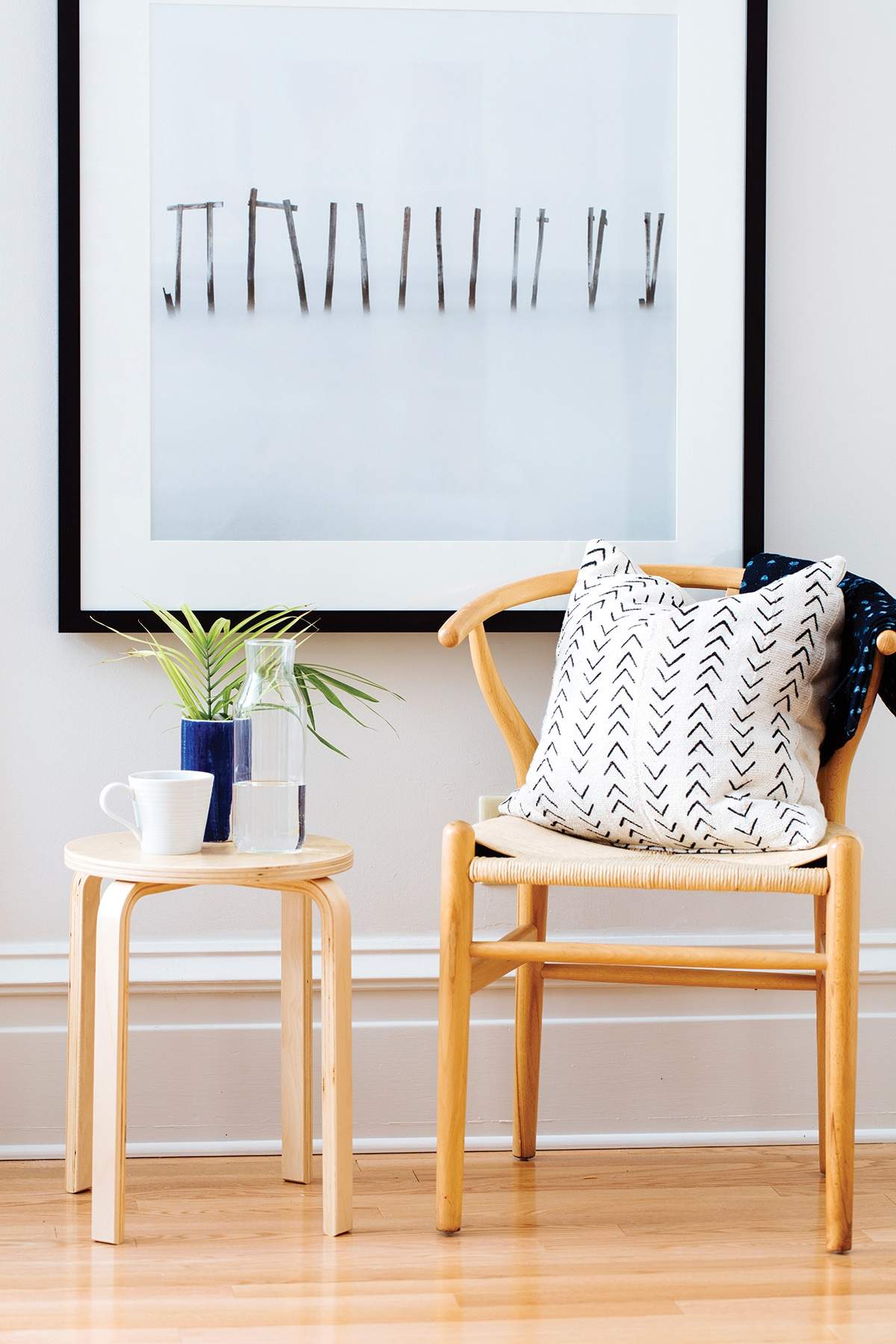
A Place to Start
Wherever you go, there you are. And wherever you are, there you can meditate. It doesn’t matter if you’re in your living room or sitting on a park bench or standing on a bus—the moment you settle your mind into meditation, your environment becomes your meditation space. So why all this talk of designating a special place in your home?
In order to cultivate mindfulness in our lives, we first have to set an intention and build a habit. Committing to meditate regularly isn’t easy. Life can feel overwhelmingly busy and distracting, and demands on our time and attention tend to spiral out of control fairly often. When it comes to sitting down with your mind, the only thing keeping you going is you. Carving out a space in your home, even if it’s only a few square feet, means literally making space in your life for a regular meditation habit to thrive. You’re essentially giving your intention to meditate a home in the physical world. By setting an atmosphere that reflects your personality and welcomes you in, you’re simply giving yourself an encouraging nudge to keep it up.
But the space itself is only a starting point. Those moments spent meditating in your designated space lay the ground for your meditation habit to flourish, and with time that habit will help you to notice opportunities to extend your practice of mindfulness further. After all, the whole world is your meditation space.
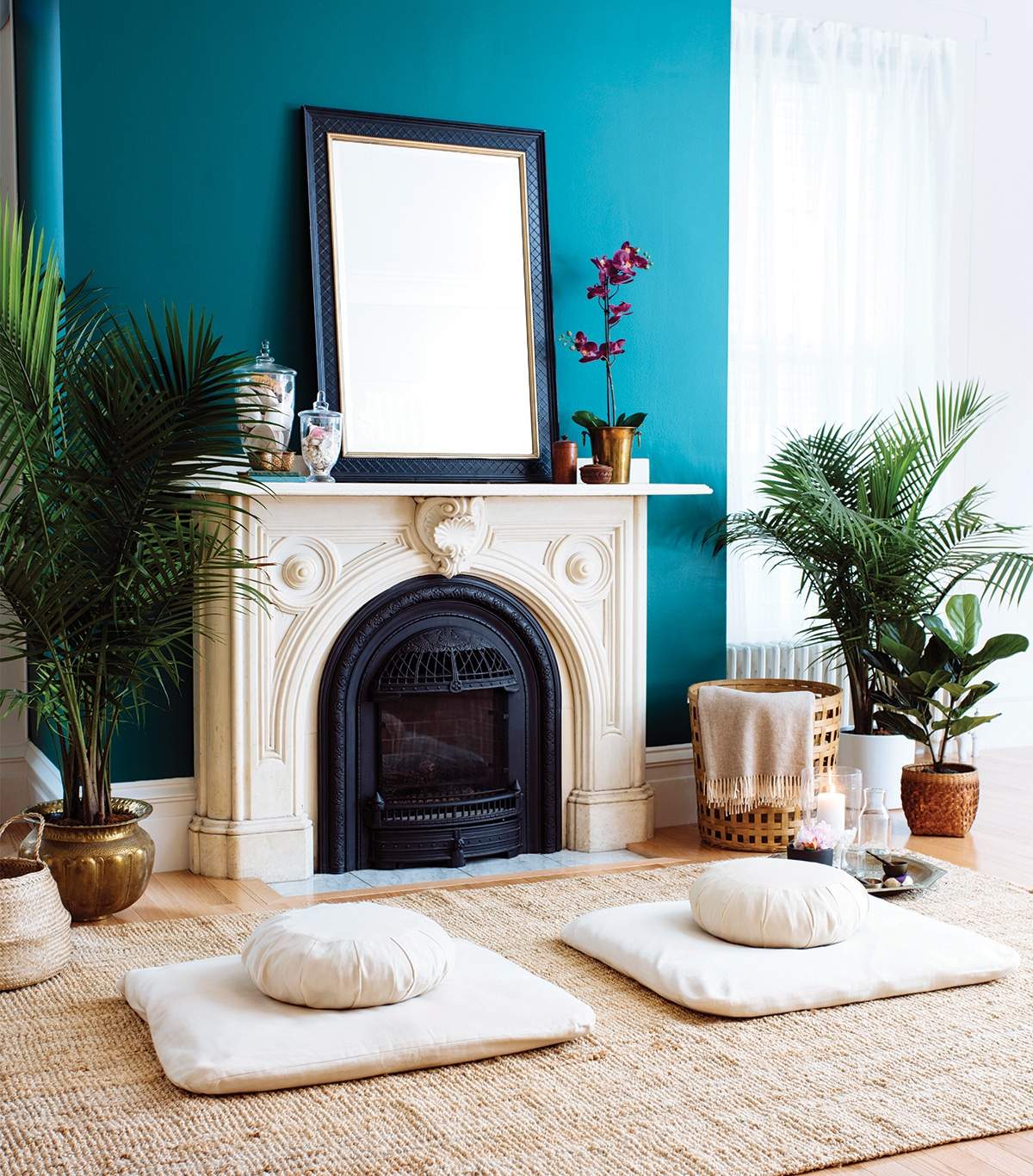
Don’t Get Too Attached
A meditation space is a helpful support, but it can also become a crutch. Once you’ve been practicing for a while, you might start to find that you don’t actually need a meditation space. All you really need is a body, mind, and breath. As soon as we dress up our meditation with candles, pretty pictures, and serene colors, we risk becoming overly attached to a particular feeling and meditating without that feeling can become even more of a burden.
More often than not, the word “meditation” is accompanied by images of sunsets, serene landscapes, and stacked rocks (seriously, Google it). But it’s one thing to appreciate beauty in the world, and it’s another to depend upon that beauty as your incentive to be in the moment. Mindfulness isn’t about drawing out and extending pleasant experiences, it’s about working directly and openly with the not-so-pleasant stuff of life. When life gets hectic our first response is often to push away or shut out our present-moment experience. Meditation allows us to cultivate equanimity and clarity for the times when we face the inevitable challenges of being human.
A comfortable meditation space is kind of like having a set of training wheels: It provides us steadiness and support to learn and hone our technique. It helps us to build confidence in our ability to work with whatever comes our way in life. Having that space to come back to helps to anchor our meditation practice. Unlike training wheels, the goal isn’t to move past needing a sitting space, but after a while you might notice that you no longer rely on that anchor—that you can meditate on the spot, wherever you happen to be.
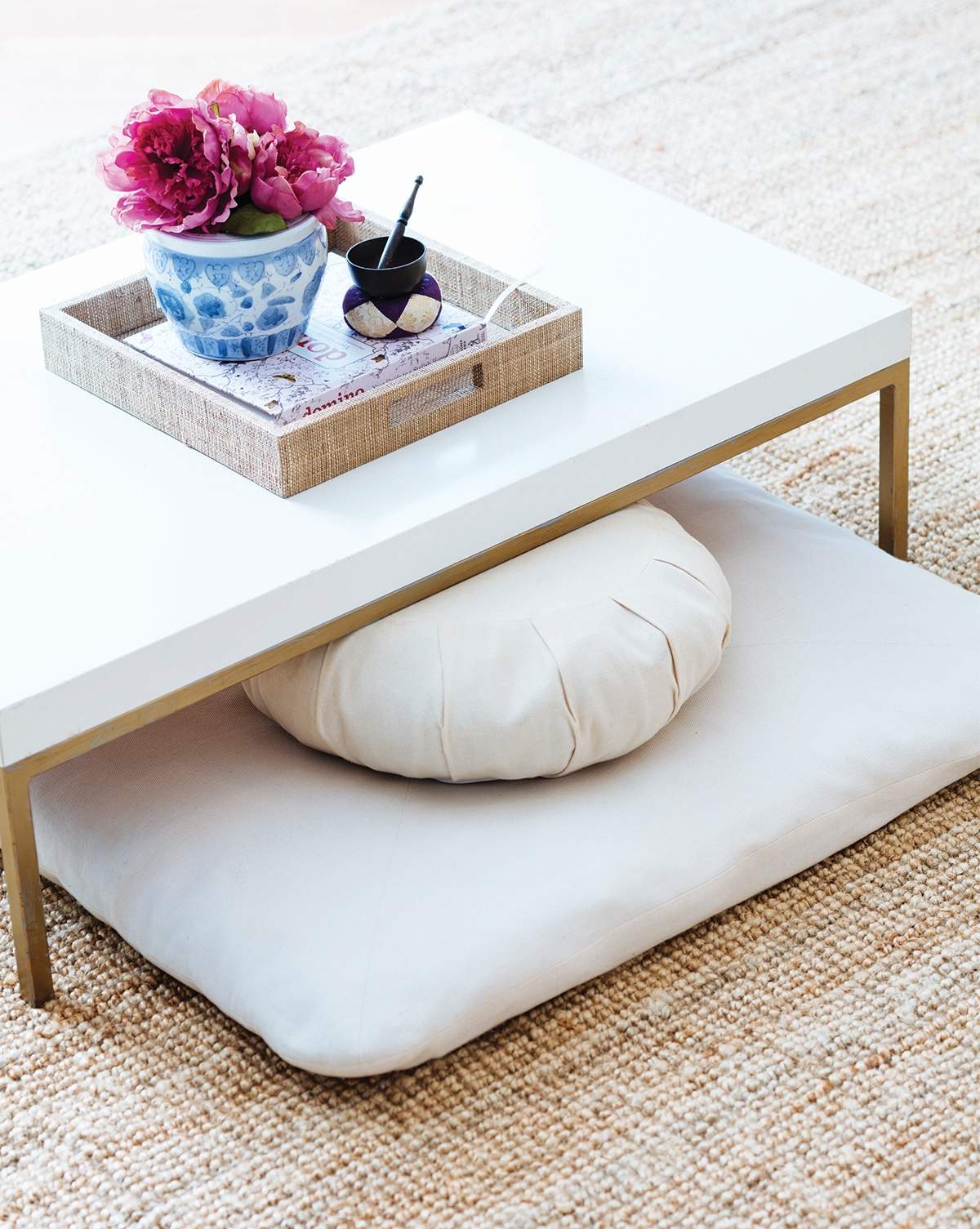
What Do You Need?
ESSENTIALS
You, and something to sit on: Whether you use a cushion or a chair, your seat should provide proper support. And don’t shy away from extra support cushions and bolsters—when it comes to meditation, your body is priority number one.
ADD-ONS
Some things you don’t exactly need, but are mighty useful to have on hand: a timer, a glass of water, a cover-up (e.g., a sweater, shawl, or blanket) and socks.
ENVIRONMENT
Even if you don’t dress up your space at all, you’ll want to consider noise level, comfort, and temperature.
